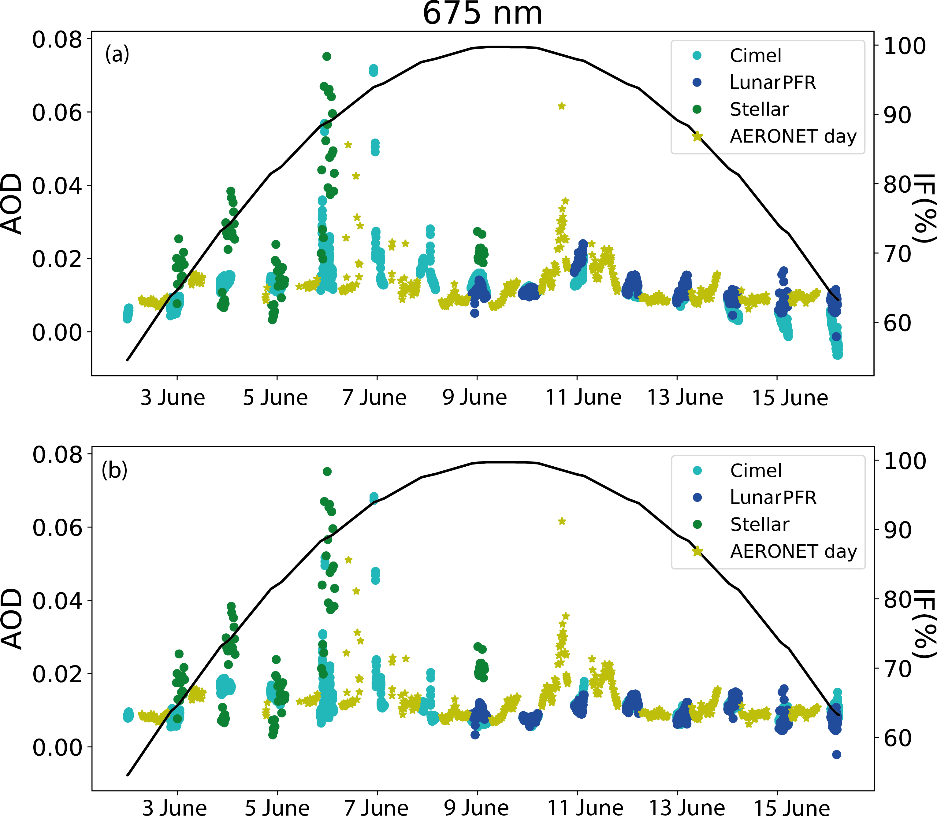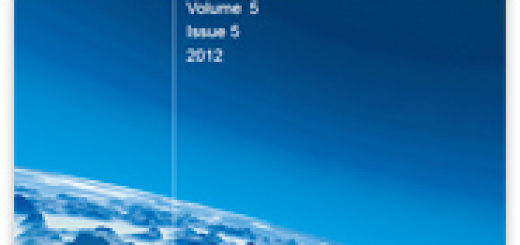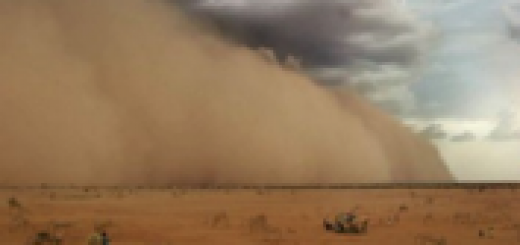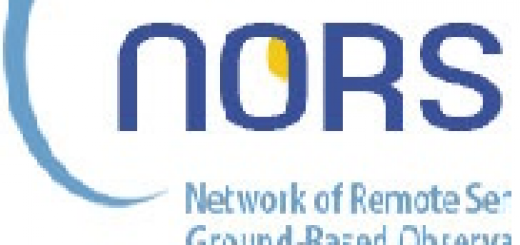Evaluation of night-time aerosols measurements and lunar irradiance models in the frame of the first multi-instrument nocturnal intercomparison campaign

Photometric measurements have been used to provide reliable and valuable information to compile long-term and global Aerosol Optical Depth (AOD) records and other aerosol properties in order to better understand the role of aerosols in the Earth’s climate. However, AOD data provided by sun photometers is severely restricted since it is limited to daytime, making full diurnal (24 h) aerosol monitoring and characterization impossible. This important drawback seriously constrains the study of atmospheric processes in which day-to-night variations play an important role.
This study presents the results of the first multi-instrumental comparison campaign of nocturnal measurements performed at Izaña high-mountain station. Three different instrument were involved in this field campaign: two different lunar photometers (LunarPFR and Cimel CE318-T) and one stellar photometer. LunarPFR is a non-commercial Precision Filter Radiometer (PFR) developed at PMOD /WRC based on the sun-PFR experience. Cimel CE318-T is a sun-sky-lunar commercial photometer which performs both day and night photometric measurements. The star photometer used in this campaign is a non-commercial instrument which measures direct star irradiance using a Schmidt-Cassegrain telescope and a CCD camera as detector. This is the first time we have coincident nocturnal measurements with the only three photometer types that are currently available with such nocturnal remote sensing capabilities. The review of the different calibration techniques for lunar photometry as well as the uncertainty estimation of the nocturnal AOD are also an important outcome of the paper. In addition, the new free and open-access ROLO Implementation for Moon-photometry Observation (RIMO; http://testbed.aemet.es/rimoapp/) model has been released which will allow the scientific community to obtain reliable lunar exo-atmospheric irradiance values for the analysis of photometric data.
Our results suggest that lunar photometry is a more reliable technique, especially for low aerosol loading conditions (Figure 1). Small instrumental differences between the two lunar photometers were detected during the field campaign, only appreciated under pristine sky conditions. These discrepancies could be attributed to the different pointing process or dark current correction performed by the two lunar photometers.

Figure 1: AOD time series for master Cimel CE#971 (at 674.8 nm), LunarPFR (at 675.6 nm), stellar (at 670.0 nm) and daytime AERONET (at 675.7 nm) in the period 2-17 June 2017. AOD from lunar photometers have been extracted by means of (a) Lunar-Langley calibration with the RIMO model, and (b) Langley-plot calibration with V0c values. The black line and right y axis correspond to the evolution of the Moon’s illumination factor (IF, in %) in this period.
For more details:
Barreto, A., R. Román, E. Cuevas, D. Pérez-Ramírez, A.J. Berjón, N. Kouremeti, S. Kazadzis, J. Gröbner, M. Mazzola, C. Toledano, J.A. Benavent-Oltra, L. Doppler, J. Juryšek, A.F. Almansa, S. Victori, F. Maupin, C. Guirado-Fuentes, R. González, V. Vitale, P. Goloub, L. Blarel, L. Alados-Arboledas, E. Woolliams, S. Taylor, J.C. Antuña, M. Yela, Evaluation of night-time aerosols measurements and lunar irradiance models in the frame of the first multi-instrument nocturnal intercomparison campaign, Atmospheric Environment, Volume 202, 2019, Pages 190-211, ISSN 1352-2310, https://doi.org/10.1016/j.atmosenv.2019.01.006.







